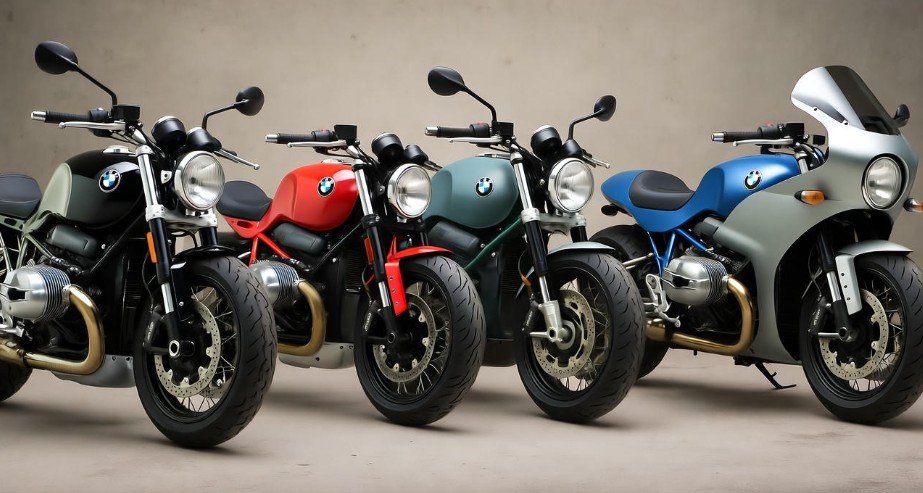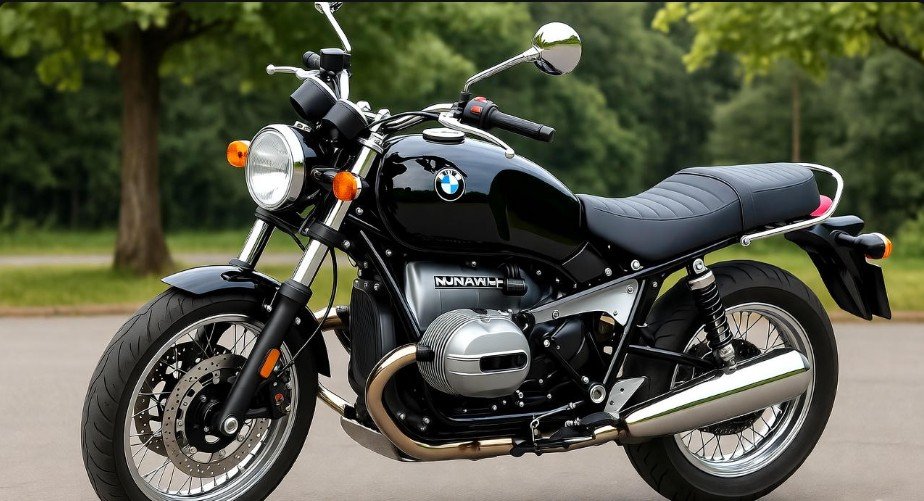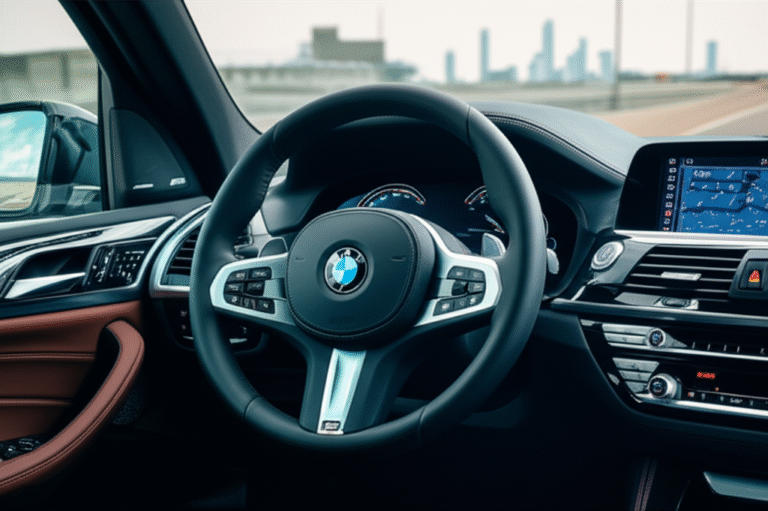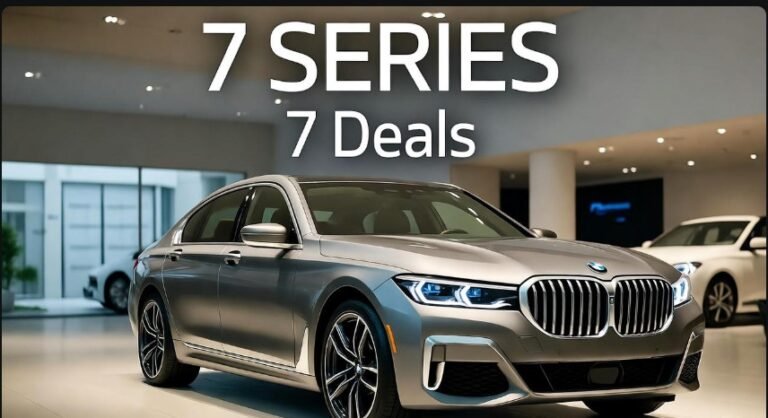BMW Ninet Cafe Racer: 5 Must-See Models Today

Discover the BMW Ninet Cafe Racer: 5 Stunning Models to Admire Right Now.
Key Takeaways:
Explore iconic BMW Ninet cafe racer transformations.
Identify unique customization features.
Appreciate expert craftsmanship in each build.
Understand the appeal of the Ninet platform.
Find inspiration for your own custom project.
The BMW Ninet has quickly become a darling of the custom motorcycle world, especially for those drawn to the timeless elegance of the cafe racer style. Its blend of classic lines and modern engineering provides an ideal canvas for builders to create something truly special. If you’re captivated by the allure of a BMW Ninet transformed into a cafe racer, you’re in for a treat. This guide will walk you through five must-see models that showcase the pinnacle of design and craftsmanship, offering a glimpse into what makes these bikes so desirable. Get ready to be inspired by these exquisite machines.
Why the BMW Ninet is Perfect for Cafe Racers

The BMW R nineT platform was designed with customization in mind from its inception. BMW Motorrad intentionally created it with easily accessible components and a stripped-down frame, making it a dream for tuners and customizers. This accessibility is a significant reason why the Ninet has become so popular for cafe racer builds. Unlike many modern motorcycles that are heavily integrated with complex electronics and sealed components, the Ninet offers a more modular approach. This allows for easier modification and personalization, from swapping out exhaust systems to completely reshaping bodywork. The air-cooled boxer engine itself is an iconic visual element, harkening back to BMW’s heritage, which perfectly complements the retro aesthetic often sought in cafe racers. Its inherent character, combined with its modern performance and reliability, makes the R nineT a compelling choice for anyone looking to create a unique cafe racer.
The Essence of Cafe Racer Culture
Before diving into specific BMW Ninet cafe racer models, it’s helpful to understand what defines a cafe racer. The cafe racer is a type of motorcycle that emerged in the United Kingdom in the 1960s. Riders would modify their standard bikes to be faster and more stylish for short, brisk rides between cafes. Key characteristics include a lowered riding position achieved through clip-on handlebars, rear-set footpegs, and often a solo seat with a tail hump. Aesthetics are paramount, with a focus on minimalism, clean lines, and performance-oriented modifications. The goal is a bike that looks fast even when standing still and provides an engaging riding experience. The spirit of the cafe racer is about expressing individuality and a passion for riding, a philosophy that resonates deeply with the custom Ninet builds we’ll explore.
5 Must-See BMW Ninet Cafe Racer Models Today
The world of custom BMW Ninet cafe racers is vast and filled with incredible talent. Here are five standout models that exemplify the art of motorcycle customization and the cafe racer ethos. These bikes showcase different approaches to the Ninet’s platform, each with its own unique charm and technical prowess.
1. Wunderlich Marathon R nineT
Wunderlich is a well-known BMW aftermarket specialist, and their take on the R nineT cafe racer, the “Marathon,” is a masterclass in functional elegance. This build focuses on enhancing the R nineT’s touring capabilities while injecting it with classic cafe racer style. It features a beautifully crafted fairing that harks back to iconic racing bikes of yesteryear, offering wind protection without compromising the bike’s aesthetic. The ergonomics are subtly adjusted for comfortable long-distance riding, yet it retains the sporty feel. Wunderlich’s attention to detail is evident in every aspect, from the custom seat to the high-quality accessories integrated seamlessly. This model proves that a cafe racer can be both stylish and practical for extended journeys.
Key Features:
Custom Fairing: Inspired by classic racers, offering wind protection.
Ergonomic Adjustments: Optimized for comfortable long-distance riding.
Premium Accessories: High-quality components integrated beautifully.
Elegant Design: Blends retro style with modern functionality.
Wunderlich Expertise: Showcases the brand’s deep understanding of BMW motorcycles.
2. Roland Sands Design (RSD) “Scrambler” (with Cafe Flair)
While often associated with scramblers, Roland Sands Design has also produced R nineT builds that lean heavily into cafe racer aesthetics, and their general approach to customization is highly influential. RSD is renowned for its bold designs and meticulous craftsmanship. Their R nineT projects often involve significant re-engineering, including custom exhaust systems, bespoke fuel tanks, and intricately designed bodywork. For a cafe racer interpretation, one can envision RSD incorporating clip-on handlebars, a minimalist tail section, and perhaps a more aggressive stance. The use of premium materials like brushed aluminum and high-grade leather is a hallmark of their work. RSD’s builds are not just motorcycles; they are rolling works of art that push the boundaries of what’s possible.
Key Features that could be adapted for a Cafe Racer build:
Custom Exhaust Systems: Distinctive sound and performance.
Bespoke Bodywork: Unique fuel tanks and tail sections.
Premium Materials: Brushed aluminum and quality leather accents.
Aggressive Stance: Lowered profile and sporty riding position.
Artistic Fabrication: Demonstrates exceptional metalworking skills.
3. Auto Fabrica R nineT Type 7
Auto Fabrica, a UK-based workshop, has gained a stellar reputation for its exquisite BMW R nineT customs, and the “Type 7” is a prime example of their cafe racer mastery. This build is a breathtaking interpretation of a 1970s endurance racer. It features a stunning, hand-formed aluminum fuel tank that flows seamlessly into a perfectly sculpted rear seat cowl. The bike is stripped down to its essentials, highlighting the beauty of the boxer engine and the clean lines of the frame. Auto Fabrica’s signature touches include a custom exhaust system, minimalist lighting, and carefully chosen vintage-inspired components. The Type 7 embodies the spirit of a bygone era while benefiting from the R nineT’s modern capabilities, creating a truly timeless machine.
Key Features:
Hand-formed Aluminum Tank: A signature Auto Fabrica element.
Integrated Seat Cowl: Creates a flowing, classic silhouette.
Minimalist Design: Focuses on essential elements and clean lines.
Vintage-Inspired Components: Evokes a strong retro aesthetic.
Exceptional Craftsmanship: Shows meticulous attention to detail.
4. K-Speed R nineT “Neo Cafe Racer”
K-Speed, a Thai custom shop known for its avant-garde and often futuristic interpretations of classic motorcycles, offers a unique take on the R nineT cafe racer. Their “Neo Cafe Racer” builds often blend retro styling with modern, almost cyberpunk elements. Expect to see unique headlight setups, custom-made fenders, and seat units that are both minimalist and eye-catching. K-Speed isn’t afraid to experiment with materials and finishes, often incorporating carbon fiber and unique paint schemes. While their style can be polarizing, it undeniably showcases innovation and a forward-thinking approach to motorcycle customization. This build reminds us that the cafe racer spirit can evolve and adapt to contemporary design trends.
Key Features:
Unique Lighting: Distinctive headlight and tail light integration.
Futuristic Elements: Blends retro with modern or cyberpunk aesthetics.
Innovative Materials: Use of carbon fiber and custom finishes.
Minimalist Seat Unit: Sleek and integrated design.
Avant-Garde Styling: Bold and experimental approach.
5. Custom Build by a Local US Workshop (Example: Revival Cycles)
The United States hosts a vibrant custom motorcycle scene, with numerous workshops dedicated to transforming bikes like the R nineT. While specific models change frequently, workshops like Revival Cycles in Austin, Texas, consistently produce exceptional builds that capture the essence of the cafe racer. These American-built customs often emphasize robust craftsmanship, high-quality components, and a deep understanding of performance. You might see a Revival Cycles Ninet cafe racer featuring custom fabricated subframes, bespoke fuel tanks, K&N air filters for enhanced breathing, and premium suspension upgrades. Their approach often blends American muscle with European finesse, resulting in bikes that are as thrilling to ride as they are beautiful to behold. Exploring local US custom shops is a fantastic way to see cutting-edge interpretations of the cafe racer ideal. For more on custom bike building regulations in the US, you can refer to resources from the Motorcycle Industry Council (MIC).
Key Features:
Custom Fabrication: Bespoke subframes and components.
Performance Upgrades: Enhanced engine and suspension.
High-Quality Components: Use of premium parts.
American Craftsmanship: Robust build quality and attention to detail.
Unique Styling: A blend of classic and contemporary influences.
Pro Tip: Consider the Usability of Your Custom Build
When admiring or planning a custom BMW Ninet cafe racer, always think about its intended use. Will it be a weekend B-road blaster, a daily commuter, or a pure showpiece? This will influence choices like handlebar height, seat comfort, and the necessity of certain fairings or luggage options. Remember, a truly great custom bike balances aesthetics with functionality for its owner.
Essential Components of a BMW Ninet Cafe Racer Conversion
Transforming a stock BMW R nineT into a cafe racer involves several key modifications. Understanding these components will help you appreciate the craftsmanship and effort involved in each build.
Clip-On Handlebars
This is perhaps the most defining feature of a cafe racer. Clip-on handlebars attach directly to the fork tubes, significantly lowering the rider’s position and offering a more aggressive, forward-leaning stance. This not only contributes to the sporty look but also enhances aerodynamics and improves handling for spirited riding.
Rear-Set Footpegs
To complement the clip-on handlebars, rear-set footpegs reposition the rider’s feet further back and often higher up. This further tucks the rider in, creating a more compact riding posture that is ideal for performance riding and contributes to the bike’s sleek profile. It also improves ground clearance for cornering.
Solo Seat and Tail Hump
Classic cafe racers often feature a minimalist solo seat, frequently with a sculpted tail hump that matches the shape of the seat. This reduces weight and contributes to the bike’s streamlined appearance. Many custom builders craft these units from fiberglass or aluminum to perfectly fit the R nineT’s frame.
Exhaust System
A performance exhaust is almost a given on any cafe racer. For the R nineT, this often means a custom-made 2-into-2 or 2-into-1 system, typically made of stainless steel or titanium. These not only offer a more aggressive sound and improved performance but also contribute to the bike’s overall aesthetic, often with a more tucked-in or upswept design.
Minimalist Lighting and Instrumentation
To achieve a clean, uncluttered look, cafe racers typically feature smaller, more integrated headlights, tail lights, and turn signals. Instrumentation is often simplified to a single, classic-looking speedometer or a compact digital display, further enhancing the minimalist aesthetic.
Custom Fuel Tank
While the stock R nineT fuel tank is already aesthetically pleasing, many custom builders opt for hand-formed metal tanks or modified stock tanks to better integrate with the overall design, particularly the seat and tail section, creating a more cohesive and flowing silhouette.
Table: Common Modifications for R nineT Cafe Racers
| Modification | Purpose | Impact on Aesthetics | Impact on Performance |
| :————————- | :————————————– | :——————- | :——————– |
| Clip-On Handlebars | Lowered riding position, sporty look | High | High |
| Rear-Set Footpegs | Improved cornering clearance, posture | Medium | High |
| Solo Seat/Tail Hump | Reduced weight, streamlined appearance | High | Medium |
| Custom Exhaust System | Enhanced sound, performance, looks | High | High |
| LED/Minimalist Lighting | Clean, uncluttered look | High | Low |
| Custom Fuel Tank | Integrated design, flowing lines | High | Low |
| Performance Air Filters | Improved engine breathing | Low | Medium |
| Upgraded Suspension | Better handling, stability | Medium | High |
| Custom Paint/Finishes | Unique personalization, visual appeal | Very High | None |
The Appeal of the BMW Ninet Platform for Builders
The BMW R nineT’s design philosophy makes it exceptionally well-suited for custom builds. Its modular construction allows for easy removal and replacement of major components like the subframe, seat, and exhaust. The accessible wiring harness and straightforward engine management system also simplify modifications. Furthermore, the air-cooled boxer engine is not just a mechanical marvel but also an iconic visual centerpiece, providing a strong aesthetic anchor for any custom project. The bike’s inherent quality and classic BMW engineering provide a reliable and capable foundation, ensuring that these custom creations are not just beautiful but also performant and enjoyable to ride. This combination of design foresight and engineering excellence is why the R nineT continues to inspire some of the most sought-after custom motorcycles in the world.
Frequently Asked Questions (FAQ)
What makes the BMW Ninet a good base for a cafe racer?
The R nineT is designed with a modular chassis, making it easy to swap parts. Its classic boxer engine design also fits the retro aesthetic perfectly.
Are cafe racers comfortable for long rides?
Traditional cafe racers can be less comfortable due to their aggressive riding position. However, modern R nineT cafe racer builds often incorporate ergonomic improvements for better touring comfort.
What are the most common visual changes for an R nineT cafe racer?
Key changes include clip-on handlebars, a solo seat with a tail hump, redesigned exhaust, and often a minimalist headlight and instrumentation.
Can I convert my stock Ninet to a cafe racer myself?
Yes, with the right tools, knowledge, and patience, many conversions are possible. However, complex fabrication might require professional help from a custom shop.
How much does it typically cost to convert an R nineT into a cafe racer?
Costs vary widely depending on the extent of modifications and parts used. A basic conversion might cost a few thousand dollars, while high-end, bespoke builds can cost tens of thousands.
Are there any legal considerations for custom motorcycles in the USA?
Yes, modifications must comply with federal and state regulations regarding emissions, noise levels, lighting, and safety equipment. It’s advisable to consult your local Department of Motor Vehicles (DMV) or resources like the NHTSA for specific guidelines.
Where can I find more inspiration for BMW Ninet cafe racer builds?
Online platforms like Instagram, Pinterest, and specialized motorcycle forums are great resources. Websites of renowned custom builders and BMW Motorrad’s own custom builds also provide excellent inspiration.
Conclusion
The BMW Ninet cafe racer represents a beautiful fusion of classic motorcycle artistry and modern engineering. The five models highlighted—Wunderlich Marathon, Roland Sands Design’s adaptable style, Auto Fabrica’s Type 7, K-Speed’s Neo Cafe Racer, and the exemplary work of US custom shops—each offer a distinct vision of what this iconic bike can become. They demonstrate the incredible potential of the R nineT platform for builders and enthusiasts alike, proving that the spirit of the cafe racer is alive and thriving. Whether you’re an experienced rider seeking a unique machine or a newcomer drawn to the aesthetic, these custom Ninet cafe racers are truly a sight to behold.



